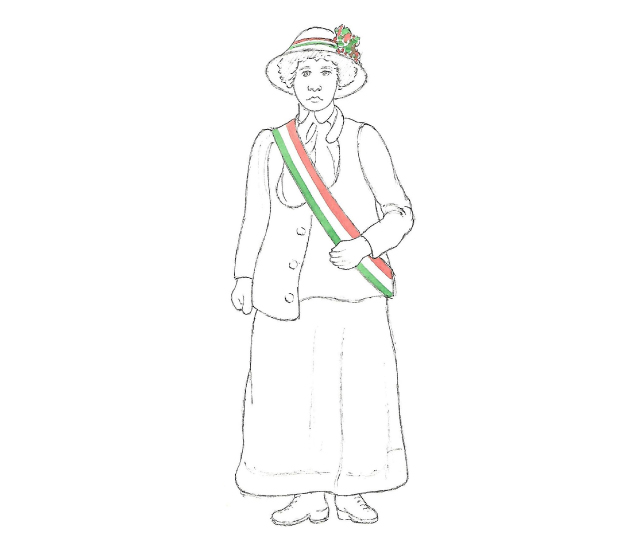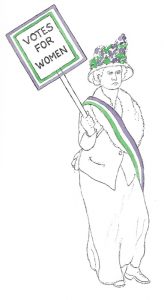In the years preceding the First World War many women in East Sussex were active in the Suffrage campaign, as explained by author and local historian Frances Stenlake.
Women’s suffrage campaigners in the Crowborough, Uckfield and Heathfield area, as elsewhere in rural Sussex, were likely to be ‘suffragists’ rather than ‘suffragettes’, i.e. emphatically non-militant and law-abiding, and members of the National Union of Women’s Suffrage Societies (NUWSS) rather than of the Women’s Social and Political Union (WSPU).
The NUWSS, founded in 1897, was led by Millicent Garrett Fawcett. Its colours were green, white and red. The colours green, white and mauve were those of the WSPU, founded by Emmeline Pankhurst in 1903. Its members, who went in for militant, law-breaking tactics, were dubbed ‘suffragettes’ in 1906 by the Daily Mail, and the terms ‘suffragist’ and ‘suffragette’ have been used indiscriminately ever since.
Although it has always received less attention than the WSPU, the NUWSS was a much larger organisation with a far greater membership, and its branches across Sussex formed part of the Surrey, Sussex and Hampshire Federation of Women’s Suffrage Societies.
The Corbett family of Woodgate (now Cumnor House) Danehill were leading figures in the formation of branches in the Central Sussex and Wealden areas. Marie Corbett, the first woman on the Uckfield District Council, and her husband Charles, Liberal MP for the East Grinstead constituency 1906-10, founded the Liberal Women’s Suffrage Society and the East Grinstead Women’s Suffrage Society, and encouraged the formation of a Crowborough branch in early 1911. Its President was Sybil, Countess Brassey, who was also President of the Bexhill, Hastings and St Leonard’s Women’s Suffrage Society.
Later that year, the Sussex Express reported that a women’s suffrage meeting in the Public Hall, Uckfield, ‘was largely attended, including many of the principal families in the neighbourhood’. Here too Countess Brassey presided and ‘that well-known speaker’ Marie Corbett took part.
By June 1912, at a meeting in the grounds of Mrs Kensington’s house in Haverbrack, Buxted, Marie Corbett could invite those present to join the Uckfield and District Women’s Suffrage Society ‘in the course of formation’.
Heathfield and District was another branch of the NUWSS and the diaries of the Reverend Gregory Pennethorne, Vicar of All Saints, Old Heathfield, give valuable information about its activities. Unfortunately, the 1912 volume is missing, but a report of a meeting in March 1912 of over 300 people in the Recreation Hall filled two columns of the Sussex Express.
The Revd Pennethorne, as usual, presided, supported by, among others, Marie Corbett, Mrs Loesch of Barklye, and Mrs Logie Pirie of Tottingworth Park. So many names are listed that the event looks like a social gathering of all the great and the good of Heathfield.
The Revd Pennethorne’s 1913 diary records further women’s suffrage meetings in 1913 but by the end of that year his health must have been failing: he neither attends nor notes any more such events, so we don’t have his comments on a big public meeting in the Heathfield Recreation Hall in March 1914, addressed by Millicent Garrett Fawcett herself.
In the chair was Lady Eleanor Cecil of Chelwood Gate, whose husband, Lord Robert Cecil, was, with Charles Corbett and Heathfield activist Dr Charles Vickery Drysdale, a founder member of the Men’s League for Women’s Suffrage. Millicent Garrett Fawcett was applauded for emphasising that militant methods were antagonistic to the very principles for which Suffragists stood.
This story was submitted by Frances Stenlake with illustrations by Malcolm Bull









